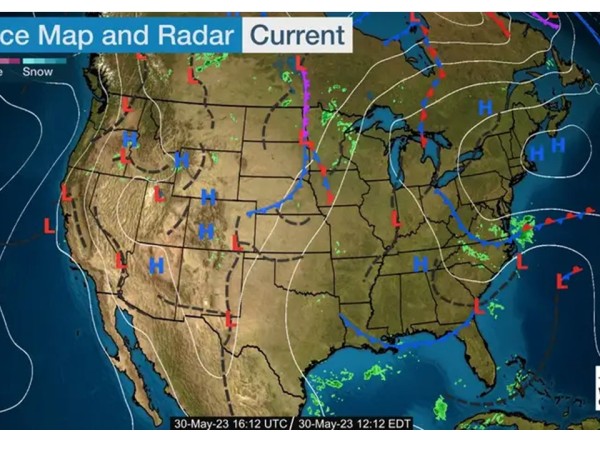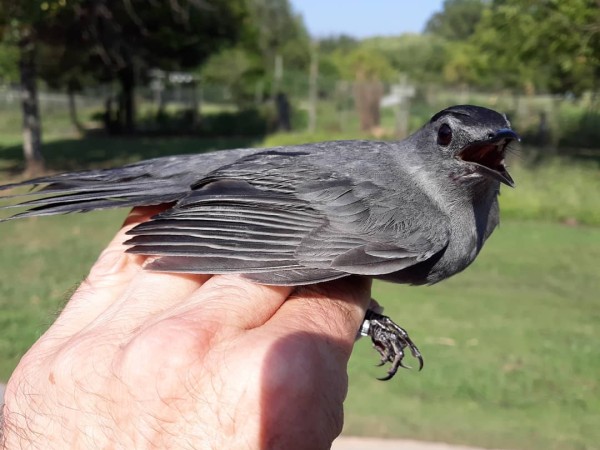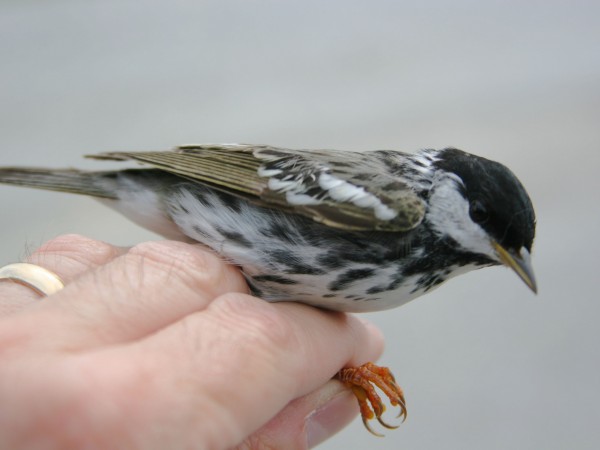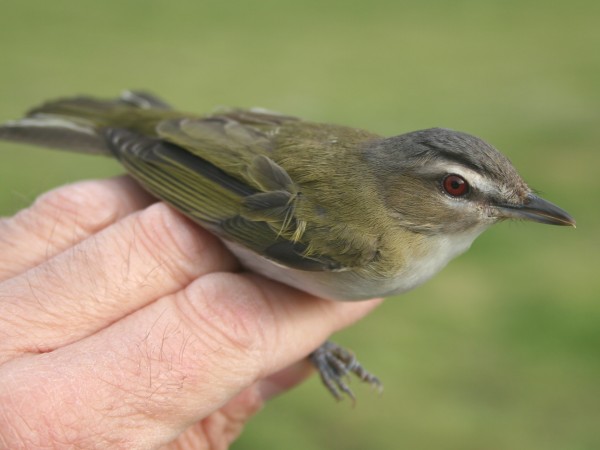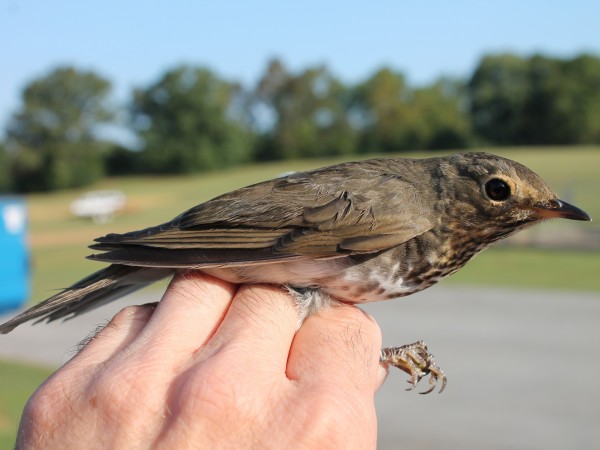2023 Spring Weather Forecasts for Migrating Songbirds-Report #8
Dear Journey North Readers,
Spring migration is coming to a close for the southern U.S. and has leveled off for many in more northerly locations. The past couple of weeks there has generally been good flying weather, which has meant a steady stream of migration in many places, with a few waves of certain species showing up.
There was a wave of Baltimore Orioles that came through Massachusetts, while Gray Catbirds, Blackpoll Warblers, and Tennessee Warblers were common in New York, and Black-throated-blue Warblers were abundant in New Hampshire. In the Midwest, there was a lot of migration of the flycatchers through Ohio, Illinois, and Michigan, including Acadian, Least, Great Crested, and Eastern Wood-Pewee. Red-eyed Vireos were seen in decent numbers as well. In the upper Great Plains and Rocky Mountain states, Least Flycatchers, Red-eyed Vireos, and Yellow Warblers moved through North Dakota, a wave of Bullock’s Orioles came through Idaho, and Mourning Warblers, Nashville Warblers, Orange-crowned Warblers, and Yellow-rumped Warblers were common sights in Montana. The good flying weather helped push more migrants up as far as Alaska, with some of the first arrivals of Alder Flycatcher, Swainson’s Thrush, Gray-cheeked Thrush, and Wilsons Warblers occurring.
The most impressive event, however, occurred on May 24 at Tadoussac, Quebec. The good flying weather meant there were a large number of migrants in the air overnight, but a strong cold front arrived right around dawn, bringing rain and strong headwinds just as the birds were arriving, which meant all those birds had to land in a hurry. You can read the full report at https://ebird.org/checklist/S139153079?fbclid=IwAR0WnZPSH_O-CXslPerkWRO-V48Ygsud-puv6d78eVg5ckL_bxRrhNcHA1Y; tens of thousands of migrants of a huge diversity were seen over the course of the day, including record or near record numbers of Tennessee Warblers (46,500), Cape May Warblers (nearly 57,000), Bay-breasted Warblers (85,000+), and Yellow-rumped Warblers (nearly 52,000). Be sure to watch some of the video clips at the bottom of the eBird report to see birds flying everywhere! A similar event happened there nearly 5 years to the day earlier (May 28, 2018).
It looks like migration will continue to chug along at a steady pace for the next week. As you can see on the weather map, there are generally clear skies and southerly winds over the whole country, with really no storm systems on the horizon. Thus, the northern half of the U.S. will continue to see migrants coming in. Migration is moving into its final stages, but there are still birds to see, so don’t put away your binoculars yet!
Take care,
David Aborn
University of Tennessee at Chattanooga
submitted 05/30/2023 12:21 PM

